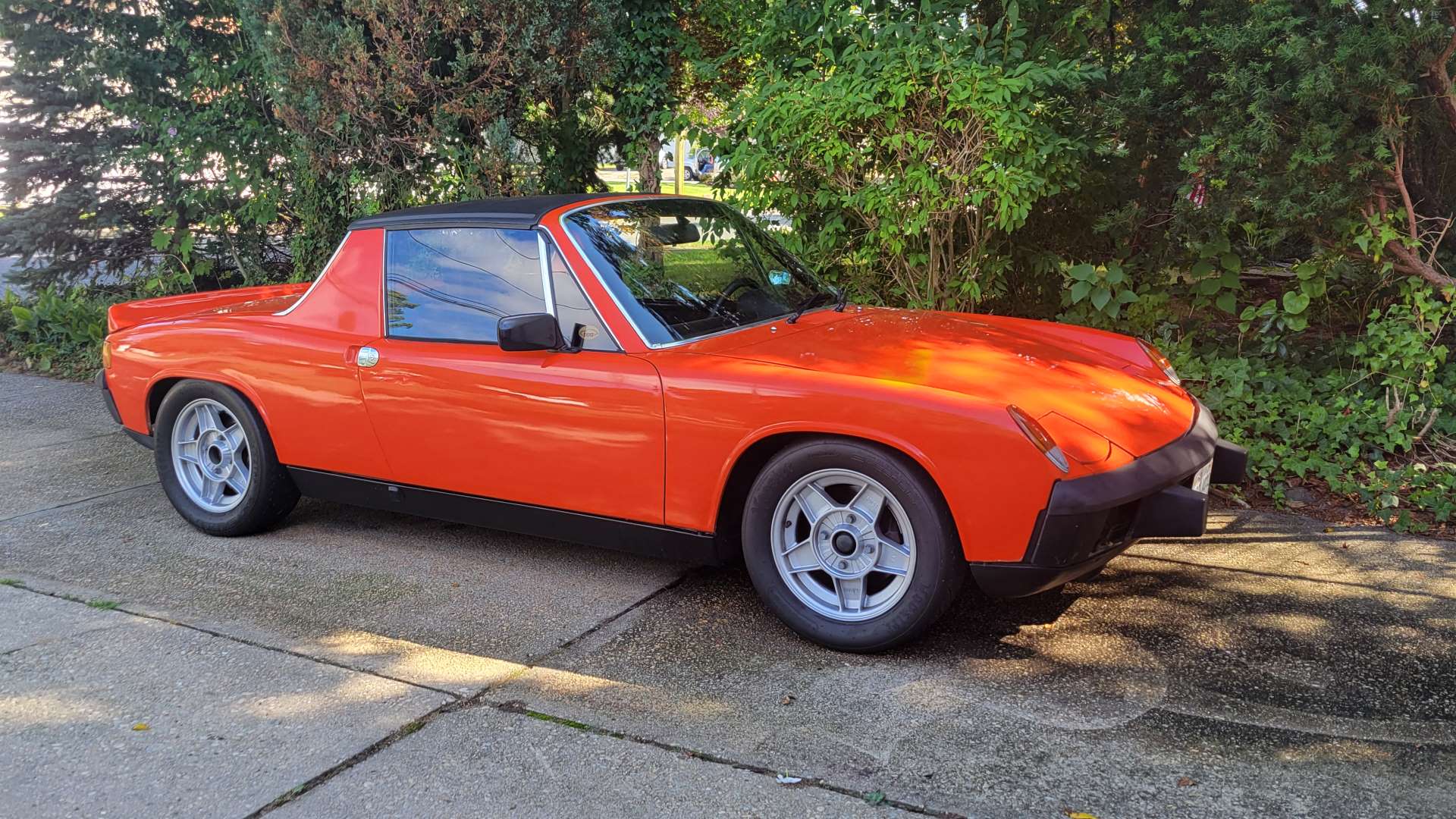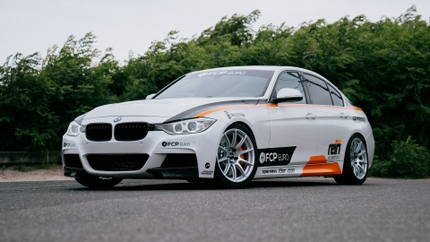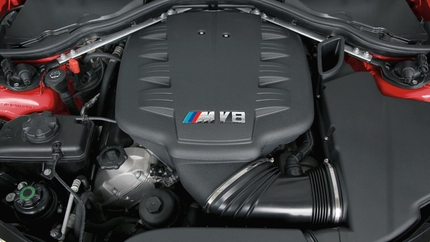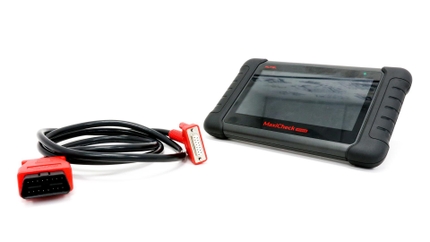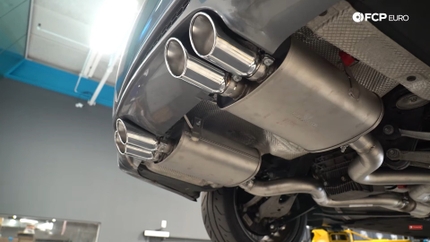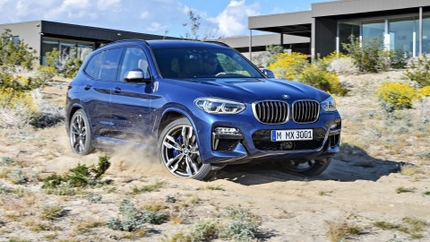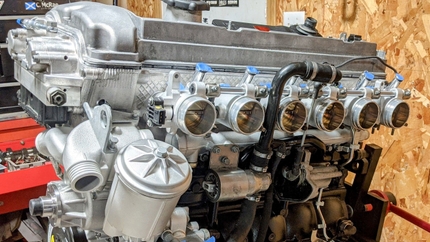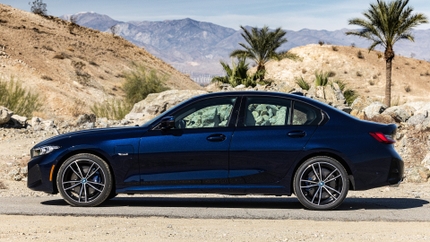- 06/03/2021
- 5 Min Read
- By: Christian Schaefer
How To Replace BMW F30 Front Brake Pads & Discs (BMW 2-Series, 3-Series, & 4-Series)
BMW has used the same style of caliper on their non-M models for quite a long time. The sliding caliper is cheap to produce, easy to service, and performs well in everyday driving situations. You will use your front brakes more than the rears in every case; the fronts are larger and do a majority of the stopping, so you'll often need to replace the front brake components sooner than the rears.
The tires and brakes on your BMW are the two most significant factors determining how effective it stops. Checking on the condition of your brakes and tires is as easy as looking at them, but changing worn tires is not a DIY task. Changing the brakes on your BMW is a DIY job, however, and can be done with simple hand tools by those with little experience. By following the steps below, you can ensure that your brakes will back to full strength.
BMW models and years applicable:
This DIY applies to numerous BMWs extending further than just the F30. The DIY includes the 2-series, 3-series, and 4-series models.
Symptoms of worn BMW F30 front brake pads and rotors:
- A grinding coming from the front, under braking
- Juddering or a vibration coming from the front, under braking
- Deep grooves on the rotor surface
- Dark-colored deposits on the rotor surface
- The vehicle's steering pulling to one side, under braking
All disc brake systems have a front bias, meaning that the front brakes do most of the braking. Their increased braking responsibility will lead to more frequent replacement intervals when compared to the rears. However, driving with excessively worn rear brakes still creates reduced stopping ability.
Once the brake pad material is completely worn away, the pad's metal backing plates are forced against the rotor, destroying it. You'll hear an intense grinding noise under braking when this happens. Additionally, metal shavings will come off of the rotors and cover your wheels. If these shavings get wet, they'll coat your wheel in rust.
How much will it cost to replace BMW F30 front brakes?
You'll need new rotors, pads, and a new pad wear sensor to service the rear brakes on your F30. The pad set used in this DIY is a ceramic set from TRW. These pads are designed with good initial bite and low dust properties and will run you around $45. Additionally, the Zimmermann front rotors go for approximately $60 a piece. Lastly, the replacement pad wear sensor will cost about $20. Altogether, budget $200 for all of the parts required for this DIY.
How long will it take to replace BMW F30 front brakes?
The service length will depend on what you choose to do. Replacing the pads and rotors is a straightforward process that doesn't require removing and reinstalling too many parts. This part of the job should take 30 minutes per corner.
To completely service the brakes, you'll need to flush the brake fluid as well. Having a pressure bleeder simplifies this process and significantly speeds it up. If you don't have a pressure bleeder, you'll need another person to help you out. Either way, bleeding the brakes shouldn't take longer than 20 minutes.
Parts required to replace BMW F30 front brakes:
Tools required to replace BMW F30 front brakes:
- Caliper Compressor
- 17mm Socket
- 18mm Socket
- 6mm Hex Bit Socket
- 8mm Hex Bit Socket
- Ratchets
- Flathead Screwdriver
- Torque Wrench
- Caliper Carrier Hook
- Electric Impact (Recommended)
Steps required to replace BMW F30 front brakes:
Step 1: Remove the caliper
Jack up the front of the car and place it onto jack stands. Then, use a 17mm socket to remove the lug bolts so you can remove the wheel.
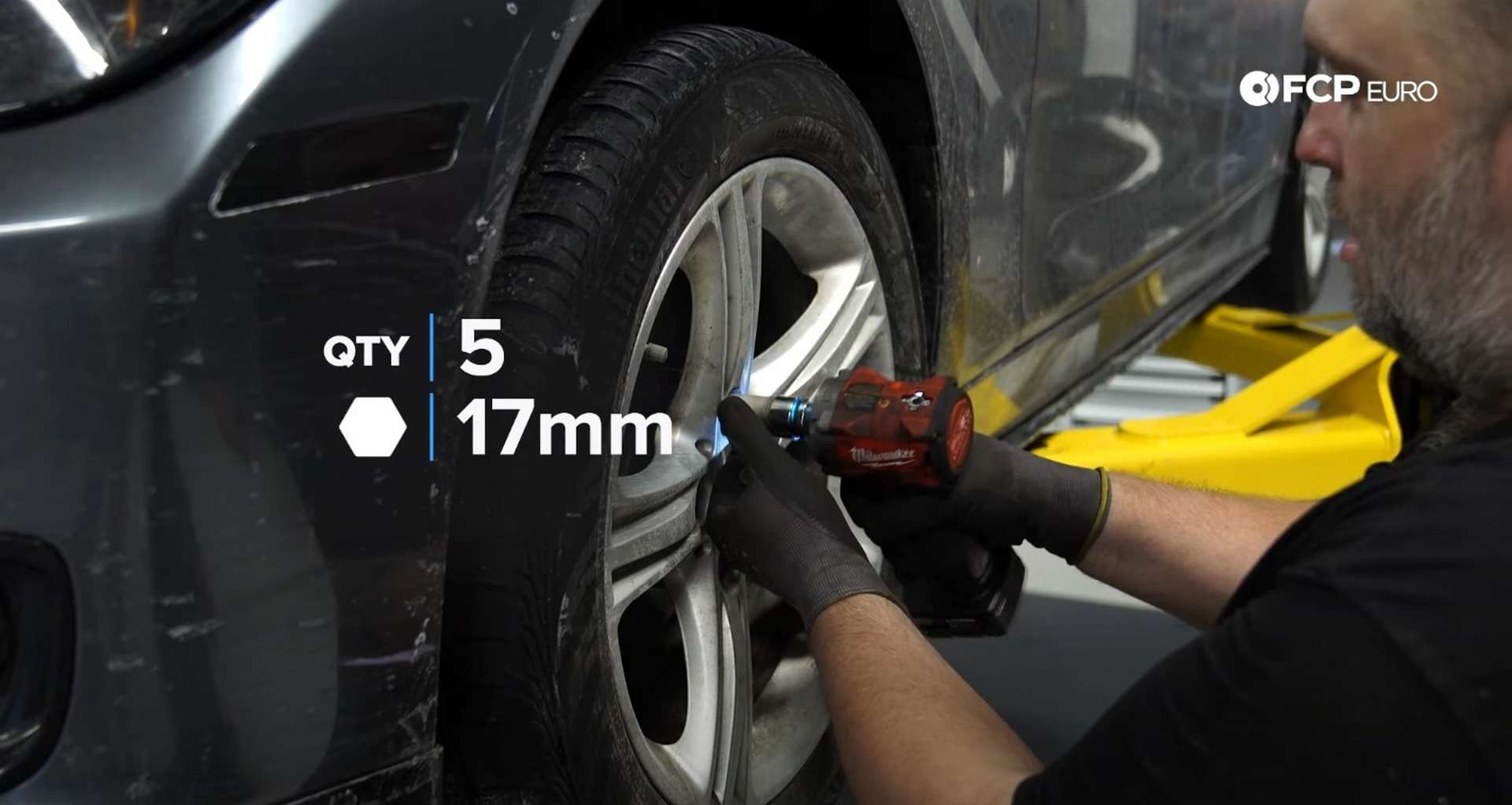
First, remove the anti-rattle clip from the front of the caliper. Push the bottom of the clip away from the hub and use a screwdriver to pry the top of the clip away from the caliper. Next, use a 6mm hex bit socket to remove the set screw from the rotor. Ensure that the bit is fully inserted into the screw to prevent it from being stripped.
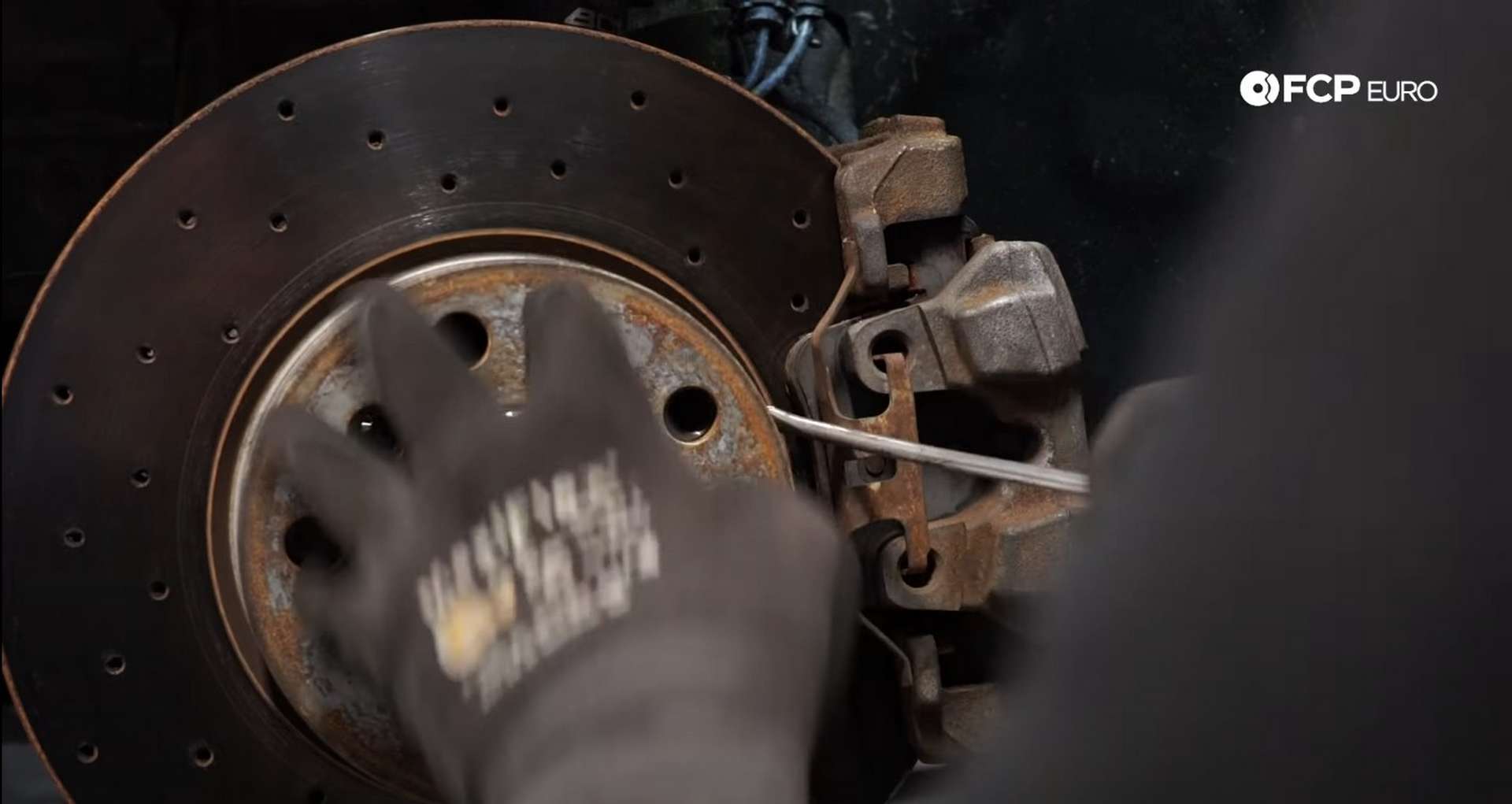
After that, remove the dust caps from the caliper pins with a flathead screwdriver. Then, use an 8mm hex bit socket to remove the guide pins.
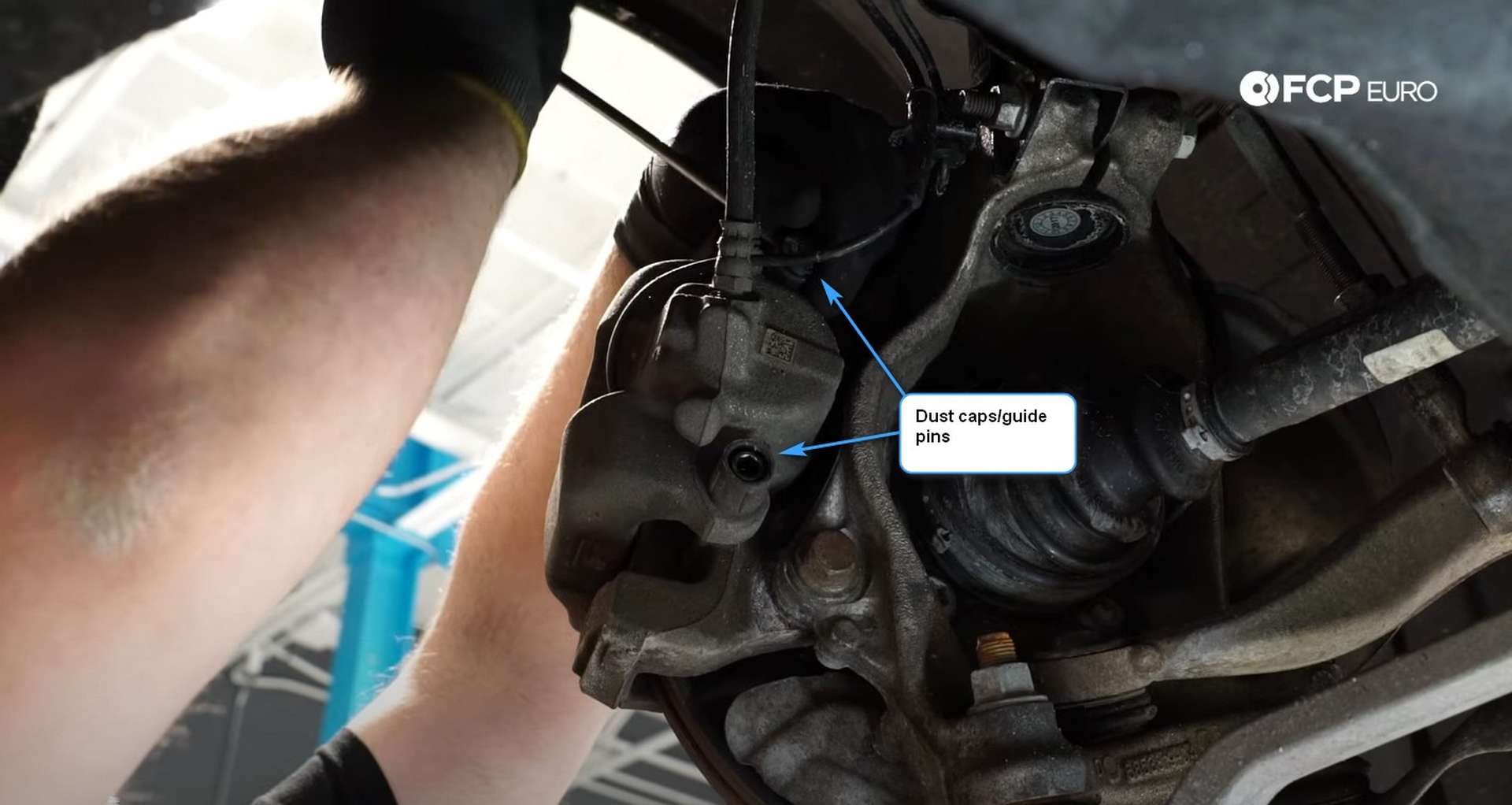
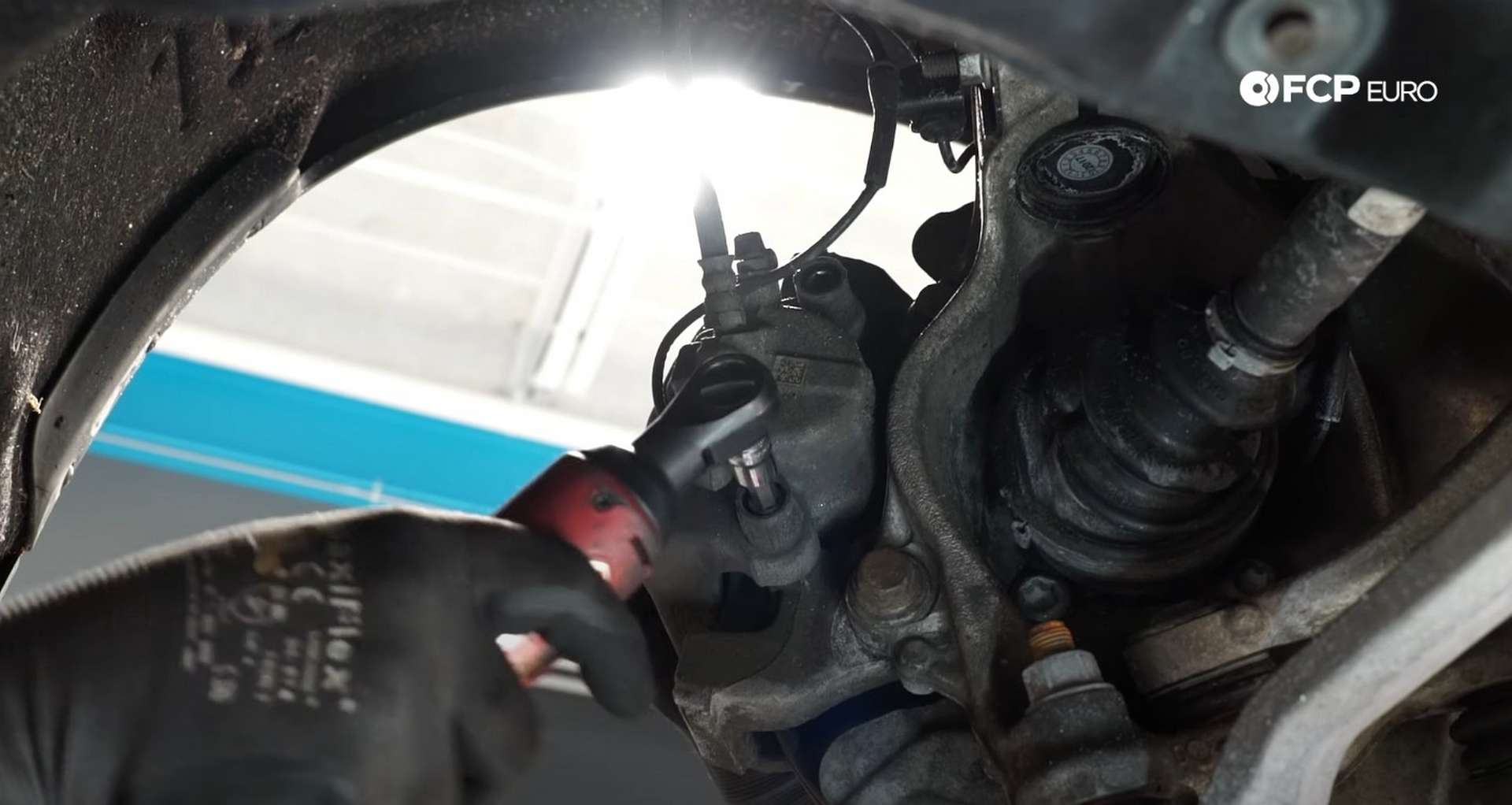
Pull the caliper away from the car to depress the piston. Doing this will create space between the pads and the rotor, allowing you to pull the caliper off more easily. When you remove the caliper, don't let it hang by its brake line. The caliper's weight will put a significant strain on the rubber line and can cause it to tear. You can use zip-tires, wire coat hangers, or the caliper hangers linked above, among other things, to hang the caliper out of the way.
The driver's side caliper will have the pad wear sensor connected to the inboard pad. Disconnect it before pulling the caliper off of the bracket.
Step 2: Replace the rotor
Use an 18mm socket to remove the caliper bracket's mounting bolts.
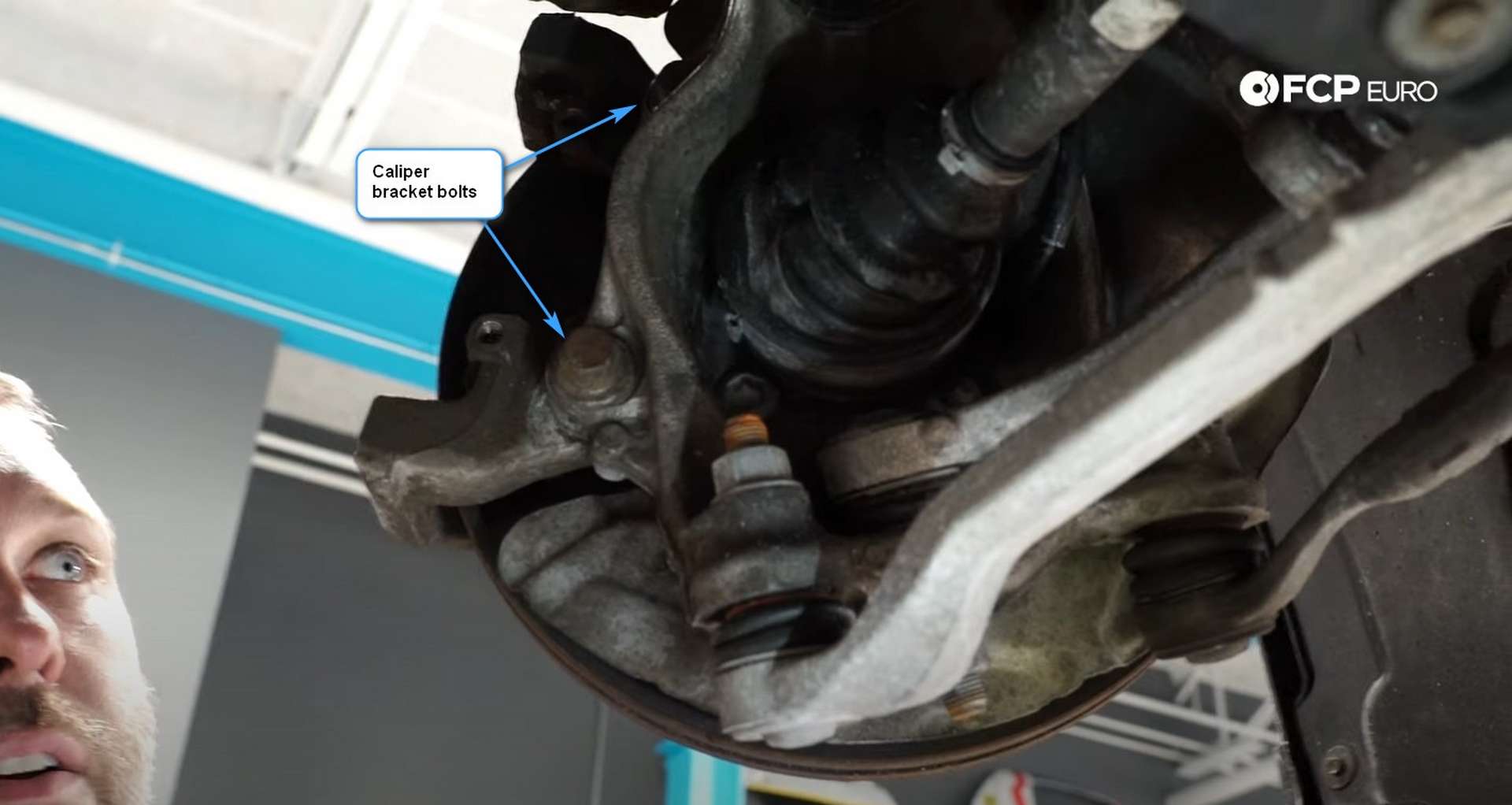
Remove the bracket from the knuckle and then pull the rotor off the wheel hub. If corrosion is present on the hub, you may have a hard time removing the rotor. Hit the rotor with a hammer to break the rotor free of corrosion.
Use a steel bristle brush or a wire wheel to remove as much rust and corrosion as you can from the hub's mating surface and the caliper bracket. Clean surfaces will ensure that fitting the new brake components goes smoothly.

Next, fit the new brake rotor to the hub and secure it in place with the set screw. Thread in the screw with the socket by hand before using the ratchet and 6mm hex bit socket to tighten it down.
Lastly, refit the caliper bracket to the knuckle. Thread in both of the bolts by hand before tightening them with an 18mm socket. Torque the bolts to 110Nm.
Step 3: Refit the caliper
Use the caliper compressor tool to push the caliper's piston back into the caliper. Then, remove the old pad from the caliper and install the new one. The inner pad on the driver's side of the vehicle uses the pad wear sensor. Pull it or use a flathead screwdriver to remove the sensor from the pad. Don't connect it to the new pad as you need to replace it.

Place the new outer pad in the bracket, against the rotor, and then fit the caliper over it. Then, thread in the guide pins by hand. Use an 8mm hex bit socket to torque them to 28Nm. Refit the dust caps after torquing.
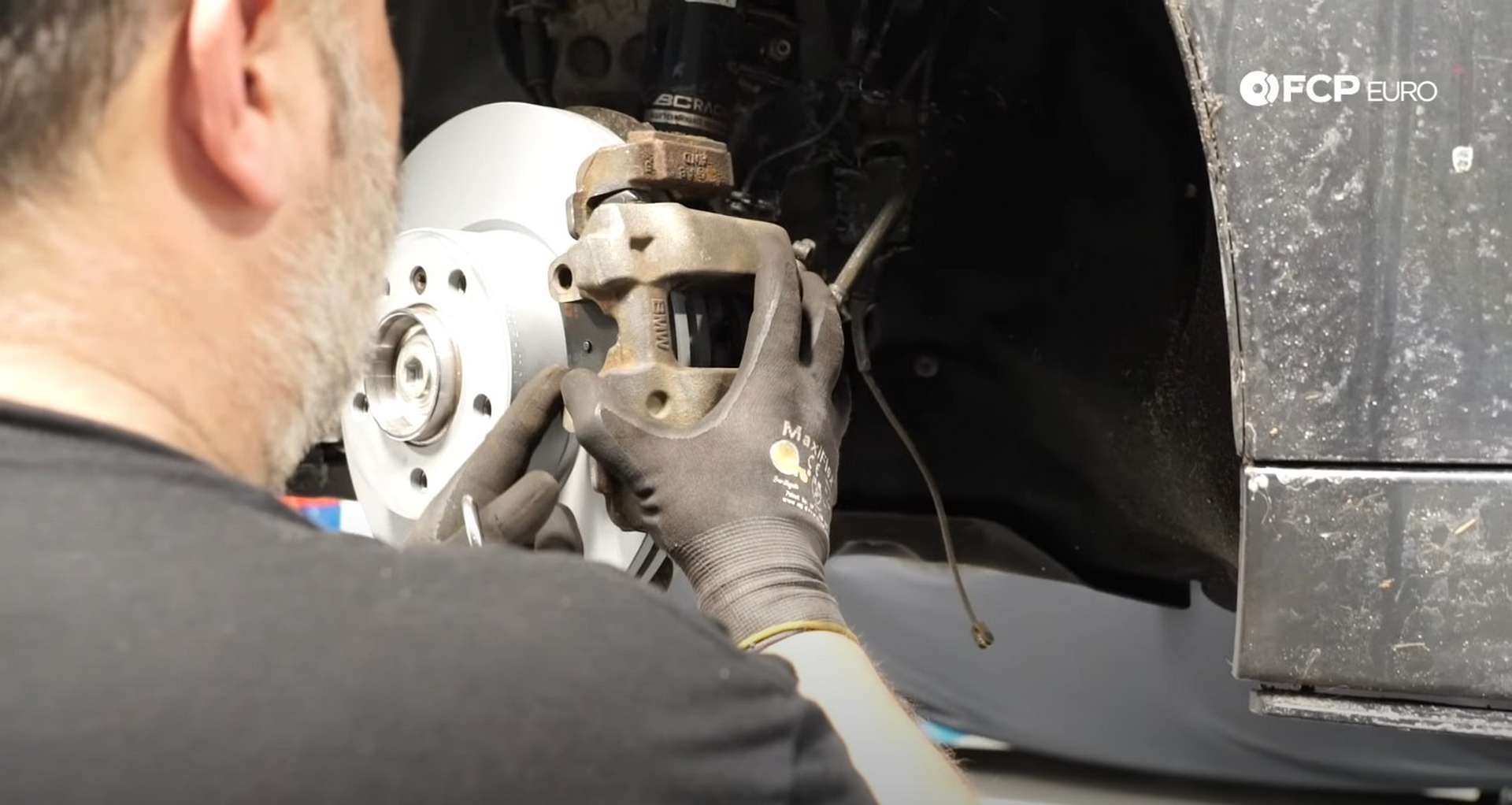
Next, follow the pad wear sensor wire back to the electrical box mounted in the fender well. Open the box and disconnect the old pad wear sensor. Connect the new sensor and route it along the same route as the old sensor, then plug it into the new inner pad.
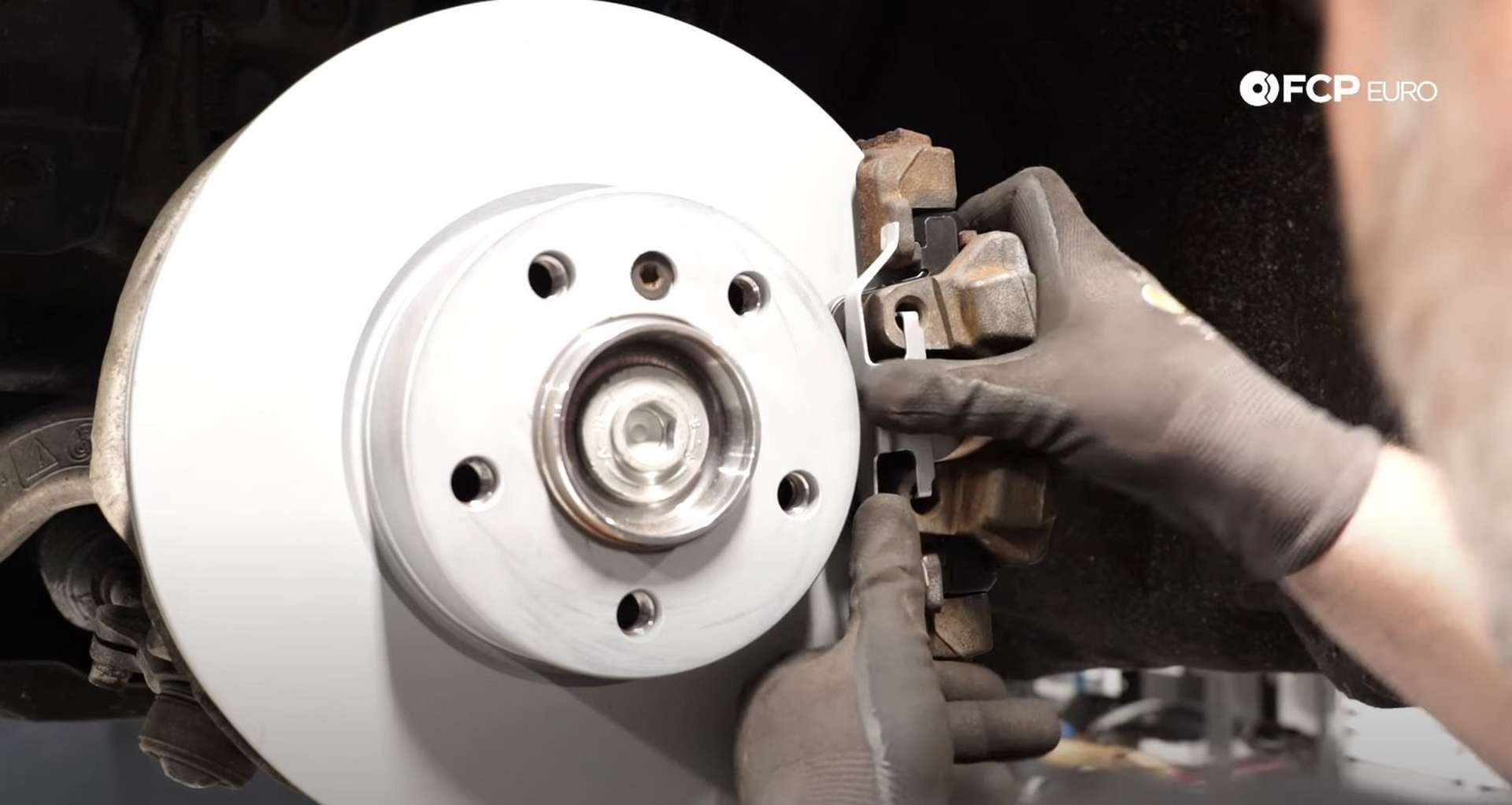
Lastly, reinstall the anti-rattle clip to the outside of the caliper. Set the clip's ears on the bracket and push up with your thumbs to get the clip set into the holes in the caliper.
Step 4: Refit the wheel and lower the car
Refit the wheel to the hub and thread in the lug bolts. Use a 17mm socket to drive them in before torquing them to 120Nm. Then, raise the car off of the jack stands and lower it to the ground.
BMW F30 Front Brake Torque Specs:
- BMW Caliper Bracket Bolts = 50Nm or 37 ft-lbs, of torque plus 90°
- BMW Caliper Guide Pins = 28Nm or 12 ft-lbs, of torque
- BMW Lug Bolt Torque = 120Nm or 89 ft-lbs, of torque
Now that your front brake pads and rotors have been replaced, you can get back to safely driving your vehicle on public roads. If you're interested in more DIYs for your BMW, you can visit bmw.fcpeuro.com and subscribe to our YouTube channel.

